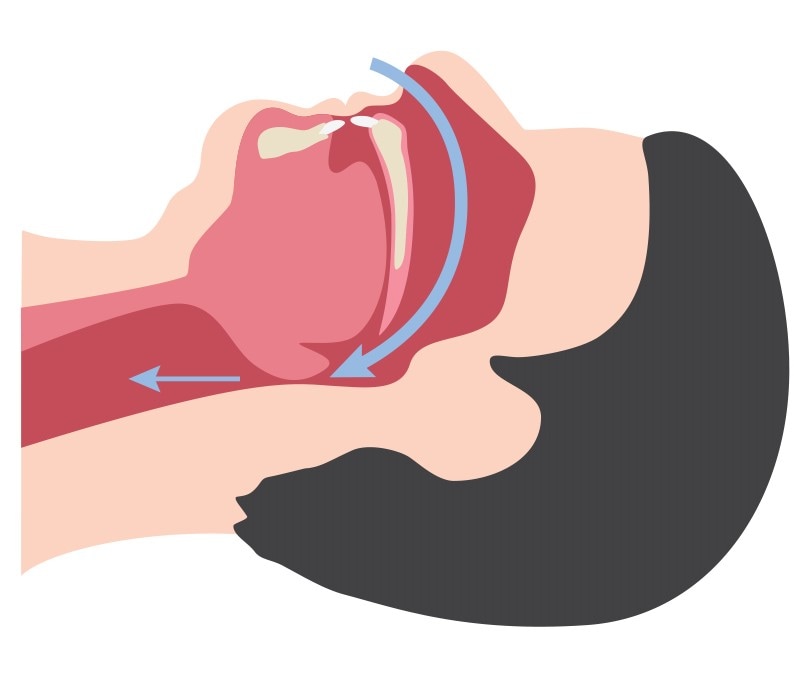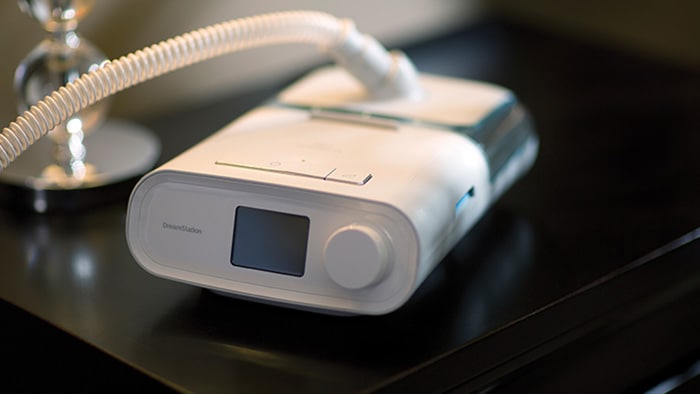
About sleep apnoea
Sleep apnoea is a common sleep disorder charactarised by repeated interruptions in breathing throughout the sleep cycle. These interruptions, called apnoeas, are caused by the collapse of soft tissue in the airway, which prevents oxygen from reaching the lungs. Sleep apnoea disrupts the sleep cycle and can dramatically impact energy, mental performance and long-term health. It’s important not to ignore potentially dangerous symptoms, such as snoring and excessive daytime sleepiness, and to consult a sleep specialist. Treatment can help you get the kind of sleep you need to help you feel more like yourself every day.
Where to buy
Philips Dream Family is available from a number of retailers. Contact your homecare provider to request our products.
For assistance, call 1300 766 488
More sleep apnoea solutions from Philips

Sleep apnoea devices Browse sleep apnoea systems that provide therapy, enhanced comfort and tools to help you stay motivated.

Sleep apnoea masks We offer a variety of designs, such as Full-Face, minimal-contact, Pillows and pediatric masks.
Frequently asked questions
- What is obstructive sleep apnoea?
-
Obstructive sleep apnoea is a condition in which a person stops breathing repeatedly through the night. Breathing stops because the throat or “airway” collapses and prevents air from getting into the lungs. Sleep patterns are disrupted, resulting in excessive sleepiness or fatigue during the day.
- What should you do if you think you may have sleep apnoea?
-
Evaluation by a doctor specializing in sleep disorders is recommended. Have a sleep study done. A sleep study can provide the doctor with information about how you sleep and breathe. This information will help the doctor to determine your diagnosis and treatment options.
- What are potential consequences of untreated sleep apnoea?
-
There is possible increased risk for:
- High blood pressure
- Heart disease and heart attack
- Stroke
- Fatigue-related motor vehicle and work accidents
- Decreased quality of life
- What is the treatment for sleep apnoea?
-
Most commonly, positive airway pressure (PAP) therapy is the treatment. It is noninvasive and can help with symptoms when used as prescribed. Less commonly, surgery or oral appliances are used, which may be effective in certain cases. Any treatment plan should include weight loss if needed, exercise and avoiding alcohol, sedatives and hypnotics.
- How does PAP or CPAP therapy work?
-
CPAP (Continuous Positive Airway Pressure) provides a gentle flow of positive-pressure air through a facial mask to keep the airway open during sleep. As a result:
- Breathing becomes regular during sleep
- Snoring stops
- Restful sleep is restored
- Quality of life is improved
- Risk for high blood pressure, heart disease, heart attack, stroke and motor vehicle and work accidents are reduced
- What can put you at increased risk for sleep apnoea?
-
- Overweight/obesity
- A large neck or tongue
- Extra tissue or crowding in the airway
- What does an apnoea episode look like?
- What are the benefits of regular usage of PAP therapy?
-
Most PAP users who remain committed to treatment enjoy:
- Increased energy and attentiveness
- Fewer morning headaches
- Reduced irritability
- Improved memory
- Increased ability to exercise
- Lower blood pressure
- Decreased risk of strokes and heart attacks
- Increased effectiveness at home and at work
- Improved overall quality of life
- What does a mask do?
-
Masks are used to deliver the air from the therapy device to you. A comfortable mask is a key factor in being able to use your treatment daily, so finding a mask that fits you and your lifestyle is important. Most masks have built-in exhalation ports that vent your exhaled air. Talk to your homecare provider about the different masks and headgear available.
- What does DreamMapper do?
-
DreamMapper is a mobile app that allows you to track your therapy progress, so you can take an active role in your sleep apnoea therapy. You can also access DreamMapper through any browser.

Are you a sleep professional?
References For informational purposes only, not to replace physician's directions.
ALWAYS FOLLOW THE DIRECTIONS FOR USE.

